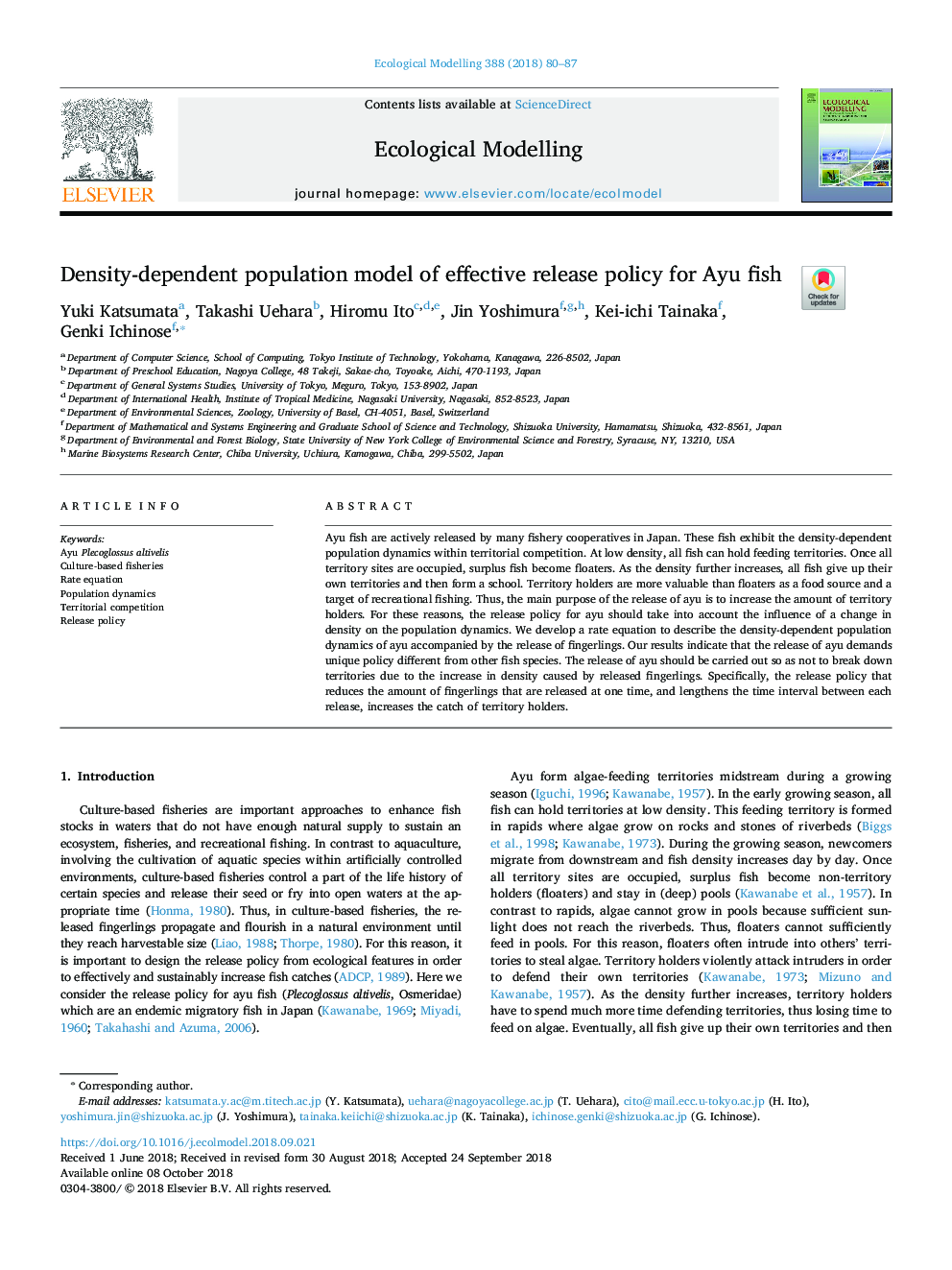| Article ID | Journal | Published Year | Pages | File Type |
|---|---|---|---|---|
| 11021795 | Ecological Modelling | 2018 | 8 Pages |
Abstract
Ayu fish are actively released by many fishery cooperatives in Japan. These fish exhibit the density-dependent population dynamics within territorial competition. At low density, all fish can hold feeding territories. Once all territory sites are occupied, surplus fish become floaters. As the density further increases, all fish give up their own territories and then form a school. Territory holders are more valuable than floaters as a food source and a target of recreational fishing. Thus, the main purpose of the release of ayu is to increase the amount of territory holders. For these reasons, the release policy for ayu should take into account the influence of a change in density on the population dynamics. We develop a rate equation to describe the density-dependent population dynamics of ayu accompanied by the release of fingerlings. Our results indicate that the release of ayu demands unique policy different from other fish species. The release of ayu should be carried out so as not to break down territories due to the increase in density caused by released fingerlings. Specifically, the release policy that reduces the amount of fingerlings that are released at one time, and lengthens the time interval between each release, increases the catch of territory holders.
Related Topics
Life Sciences
Agricultural and Biological Sciences
Ecology, Evolution, Behavior and Systematics
Authors
Yuki Katsumata, Takashi Uehara, Hiromu Ito, Jin Yoshimura, Kei-ichi Tainaka, Genki Ichinose,
